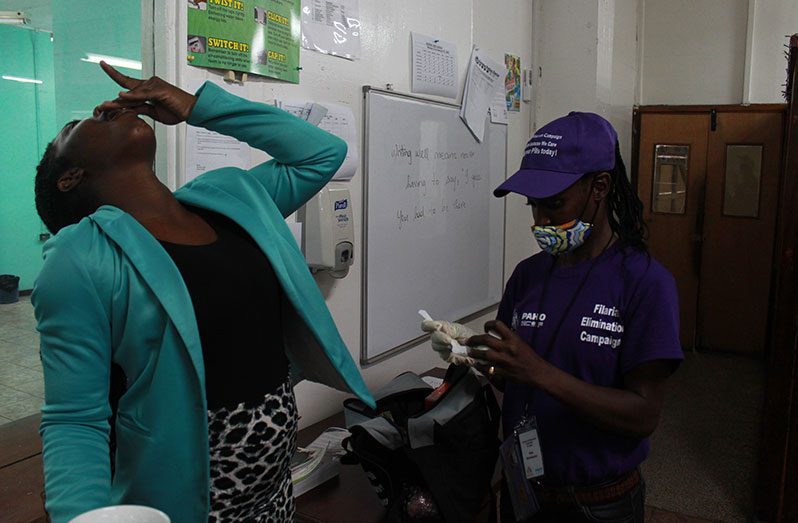ABOUT 39,000 persons have taken their filaria pills as part of what could be the last round of the Mass Drug Administration (MDA) campaign to eliminate Lymphatic Filariasis (LF) in Guyana, according to Minister of Health Dr. Frank Anthony.
This week, distribution of the filaria pills known as Diethylcarbamazine citrate (DEC), Albendazole (ALB) and Ivermectin (IVM) began in Regions Three and Four. Since the country achieved successful coverage in prior rounds of the MDA, this round of the MDA should be the last, as long as enough citizens take their pills over the next few weeks.
“So far, the response has been really good. We were able, as of [Wednesday] afternoon, to reach at least about 39,000 persons and that’s a relatively good percentage in such a short time,” the Health Minister said on Thursday, during his daily COVID-19 update with the Department of Public Information (DPI).
The distribution of pills in these two regions is expected to last about 14 days. After completing the distribution here, the pills will be distributed in Regions Six and 10, before the health personnel move onto the other regions. The entire distribution should be finished by April.
Due to the restrictions of COVID-19, a key distribution strategy in this MDA will be the house-to-house distribution.
“Our teams continue to work and we continue to urge the population to give them their cooperation because if we’re all successful in this particular programme, then in a few months the World Health Organisation (WHO) would be able to certify that we have eliminated filaria from Guyana,” Dr. Anthony explained.
During the campaign’s launch last Friday, Dr. Anthony highlighted that “Guyana is one of the four countries that remain to eliminate filaria and more than 90 per cent of our population is at risk for this disease.”
Aside from Regions Eight and Nine, all other regions in Guyana are endemic for filaria. This means that many Guyanese are susceptible to this infectious disease.
According to the WHO, Lymphatic Filariasis (LF), or filaria as it is commonly called, affects the body’s lymphatic system which functions to remove unwanted fluids from the body and transports ‘lymph’- a fluid which contains white blood cells that help to fight infections. It is caused by bancrofti worms and is transmitted by culex mosquitoes.
Importantly, if someone is infected with filaria, they may develop chronic conditions resulting in swelling of the legs and scrotum. Locally, the swelling of tissues in the leg is called ‘big foot,’ while scrotal swelling is termed ‘goadie.’ There is no cure for filaria, which means that these chronic manifestations are irreversible.
“We are providing the medication and we want people to take the medication because we want to prevent filaria,” Dr Anthony emphasised.




.png)









